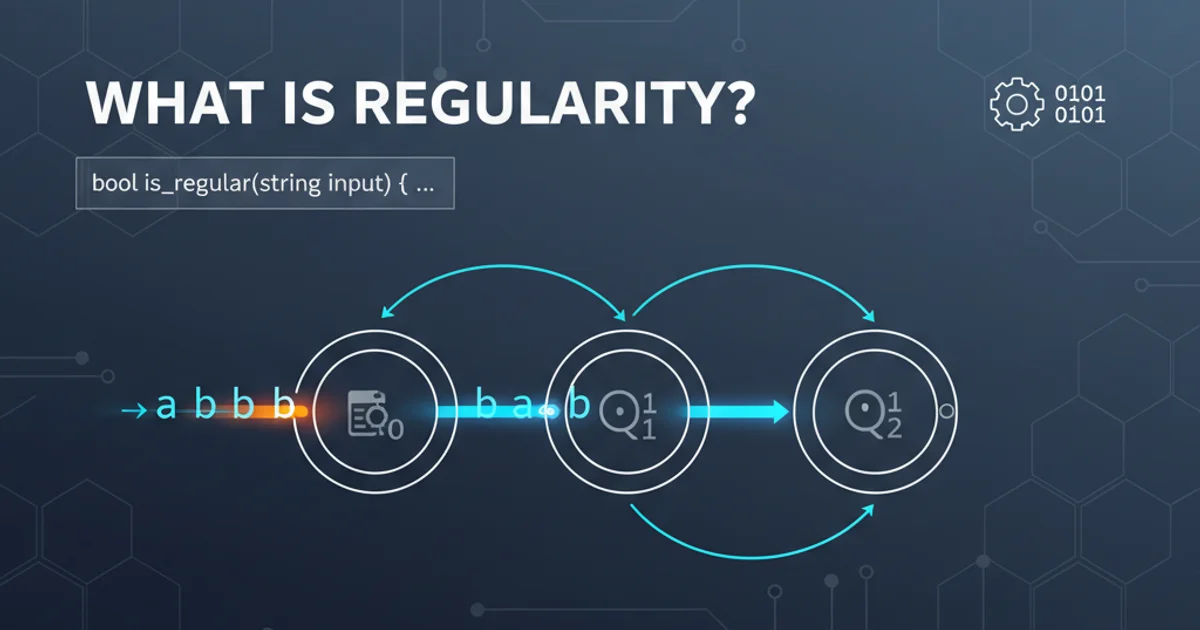What is regularity?
Categories:
Understanding Regularity in Computer Science

Explore the fundamental concept of regularity in computer science, its connection to formal languages, and its practical implications in areas like text processing and compiler design.
In computer science, the term 'regularity' refers to a property of formal languages that can be recognized by a specific type of computational model: the finite automaton. Regular languages are a foundational concept in the Chomsky hierarchy, representing the simplest class of languages. Understanding regularity is crucial for anyone delving into theoretical computer science, compiler design, text processing, and pattern matching.
What Defines a Regular Language?
A formal language is considered regular if and only if it can be described by a regular expression, recognized by a finite automaton (FA), or generated by a regular grammar. These three definitions are equivalent, meaning if a language satisfies one, it satisfies all three. This equivalence is a cornerstone of automata theory and provides powerful tools for analyzing and designing systems that process strings.
flowchart TD
A[Formal Language] --> B{Is it Regular?}
B -- Yes --> C[Can be described by Regular Expression]
B -- Yes --> D[Can be recognized by Finite Automaton]
B -- Yes --> E[Can be generated by Regular Grammar]
B -- No --> F[Not Regular (e.g., Context-Free, Context-Sensitive)]The interconnected definitions of a regular language.
Finite Automata: The Recognizers of Regularity
Finite automata (FA) are abstract machines that define regular languages. They consist of a finite set of states, a set of input symbols (alphabet), a transition function that maps current state and input symbol to the next state, a start state, and a set of accept states. When an FA processes an input string, it moves from state to state based on the input symbols. If, after processing the entire string, the FA is in an accept state, the string is considered part of the language.
stateDiagram-v2
[*] --> StateA
StateA --> StateA: 'a'
StateA --> StateB: 'b'
StateB --> StateB: 'b'
StateB --> StateC: 'c'
StateC --> [*]
StateC: Accept StateA simple finite automaton recognizing strings ending with 'bc' after any number of 'a's and 'b's.
a*b+c
A regular expression equivalent to the finite automaton shown above, describing strings that start with zero or more 'a's, followed by one or more 'b's, and ending with a single 'c'.
Practical Applications of Regularity
The concept of regularity is not just theoretical; it has numerous practical applications in computer science:
- Text Processing and Pattern Matching: Regular expressions are ubiquitous in programming languages (e.g., Python's
remodule, JavaScript'sRegExp) and command-line tools (e.g.,grep,sed) for searching, validating, and manipulating text based on patterns. - Lexical Analysis (Scanning): In compilers and interpreters, the first phase, lexical analysis, uses finite automata to break source code into a stream of tokens (keywords, identifiers, operators, etc.). The patterns for these tokens are typically regular languages.
- Network Protocol Parsing: Many simple network protocols can be described and parsed using regular expressions or finite automata.
- Data Validation: Input validation forms, email address formats, and URL structures are often checked using regular expressions, leveraging the power of regular languages.